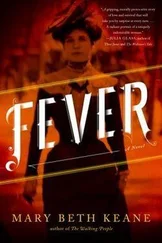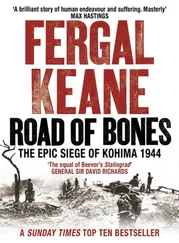The autumn of 1942 was taken up with training exercises. The most excitement was a series of mock attacks on each other’s camps. Patrols were sent out to gain knowledge of the country and its people. ‘Everywhere these patrols went,’ said Captain Radice of the 1st Glosters, ‘the local Naga tribesmen showed themselves to be friendly and hospitable.’ From his experience of the terrain, Charles Pawsey understood that the first line of defence against any potential Japanese incursion into the area, large or small, should be an ‘invisible’ intelligence screen. Regular formations marching in long columns could not provide this. Only the Nagas could pass through the jungle as ghosts, moving between India and Burma to spy on Japanese troop concentrations, ingratiating themselves with Japanese officers by pretending to support the overthrow of the British and hanging around Japanese camps to pick up intelligence while playing the role of simple-minded rustics. One of the more exotic snippets that later reached army intelligence came from a Naga who reported the presence of a Japanese commander ‘living with two wives and a maid and … having two monkeys with him trained to hurl grenades’. The unnamed officer who wrote down this story added a coda that speaks loudly of contemporary attitudes: the information had come, he wrote, ‘from a Naga who may not have known the difference between a Jap and a monkey’.
The dilemma for the planners in military intelligence was how to use the Nagas and other tribal groups in a way that imposed some kind of order on operations but allowed them the freedom to range behind enemy lines. By the standards of contemporary military thinking the answer was unusually flexible. Lieutenant Barry Bowman, commander of a Chindit reconnaissance platoon later in the war, was standing in a jungle clearing one day when he heard a clanking noise coming down the track. The platoon took cover and waited to open fire, convinced it was a Japanese unit. ‘To our great relief and surprise an elephant hove into view. On its back was a crude bamboo howdah and perched half-in and half-out of it was an eccentrically clad British officer who waved to us cheerily … A quick cup of tea and he was on his way … he was a tall, biblically bearded fellow in flowing white robes, striding along at a great pace holding up a large black umbrella against the sun … His personal servant close behind him carrying a 12 bore shotgun.’ Bowman had met an officer of V Force, one of the more esoteric units of the entire war, a combination of tea-planters, adventurers, regular officers, old soldiers, former headhunters and Indian troops. In the Naga Hills the local tribes would act as guides, spies and soldiers in the ranks of V Force. *
The founder of V Force was Brigadier A. Felix Williams who, at forty-seven, had already spent fifteen years learning the art of guerrilla warfare on the North-West Frontier. As commander of the Tochi Scouts, † he had pursued the Fakir of Ipi up and down the mountains and gullies of Waziristan. To establish V Force, Williams was given £100,000 and a headquarters staff, and promised a delivery of 6,000 rifles. The guns never turned up, so the brigadier embarked on an extraordinary gun-running operation. He sent his men into the bazaars of India’s great cities to buy up what weapons they could. Then he turned to the most reliable suppliers in the entire subcontinent, the arms dealers of the North-West Frontier. Under the direction of local police, the gunsmiths of Peshawar turned out thousands of rifles which were shipped to Assam in a first-class carriage. Some of the money given to Williams was spent on enticements for the Naga Hill tribes: red blankets, beads, osprey feathers, opium and elephant tusks were among the cargo carried into the villages where men would be recruited into V Force. Many of the V Force officers were planters or policemen, whose local knowledge and years of experience with the hill tribes were thought to make them better suited to clandestine operations than regular soldiers. The truth was that it depended almost entirely on the individual: some V Force officers took to the life with gusto while others became sick and dispirited, discovering that weeks of trekking in thick jungle were a different prospect altogether from walking the hills of a tea plantation.
In its early days V Force enjoyed considerable freedom. It was supplied by the army but operated according to the instincts of its officers, many of them characters who would never have fitted into normal military routines. Operating in the Naga Hills later in the war, Lieutenant Bowman discovered that patrolling in the tribal areas could be a source of both trial and astonishment. Like almost every other officer engaged in special operations, he was impressed by the Nagas’ loyalty to the British. This was the outer limit of empire and yet echoes of home could be found in the most unlikely places. Entering a village one evening, Bowman’s patrol was greeted heartily by the headman. ‘The Pahok headman was extremely pro-British and insisted on us having dinner in his big long hut. It was all very claustrophobic, full of smoke and very dark with just one or two primitive oil lamps. However, the chicken and rice and rice beer were extremely welcome. The headman rounded off the evening by producing a battered old HMV gramophone on which he played his only record – it was Harry Lauder singing his old music hall song “Keep right on to the end of the road”. Highly appropriate.’ In another village the headman saved the lives of Bowman and his colleagues by alerting them to the presence of Japanese in a nearby hut. Having sprinted into the jungle, Bowman then regrouped with his unit and worked back to cover near the hut. ‘I decided not to hang around any longer and we opened fire. The Japs leapt and fell back under the hut and we raked the hut for a few rounds more and then hightailed back up the hill.’
Each of the six V Force areas was covered by at least two cells operating independently of each other, so that information could be cross-checked in case the Japanese tried to spread false intelligence. But the idea of using the V Force units as proper guerrillas gradually faded away because they could never muster enough firepower or trained men to challenge the Japanese in battle. The jungle also took a heavy toll. As one V Force commander, Colonel R. A. W. Binny, wrote, ‘Experienced officers were wounded, went sick or were relieved and their places filled by young officers from units in India. Though keen enough they could not quite keep up the patrolling standards or endure the same hardships as the earlier ones.’ The hardships were considerable, particularly for young men fresh from barracks in India. Lieutenant Colonel Ord, who commanded 5 V Ops Area, wrote that all the men under his command had to be able to march an average of thirty miles a day across the hills, unencumbered by heavy baggage. ‘A heavily loaded man is not a guerrilla.’
There were other, more esoteric elements to their jungle education. Edward Lewis was a V Force officer operating inside Burma, where local Chin tribesmen instructed him in the traditional means of body disposal. ‘When somebody died they put the body into a tree and let the ants eat the flesh. They would then go and collect the bones and put them in a hole.’ An official document noted that the Chins operating with V Force were ‘very fond of biting each other which is considered more satisfying than a mere brawl with knives’.
The V Force experiment was far from perfect: sectarian feuding among local tribes in the Arakan compromised its operations; and the lack of experienced officers inevitably reduced efficiency. An attempt to introduce fiercely warlike Afridi tribesmen from the arid North-West Frontier into the jungles under V Force command ended in mutiny and the disbandment of the Afridi Legion. A few senior generals viewed V Force, and all similar secret organisations, with disdain, believing they absorbed considerable resources for minimal gain. Some of this was undoubtedly based on genuine concerns, but there was also a strong element of prejudice. General Slim was more generous. ‘Later, along the whole front,’ he wrote, ‘V Force became an important and very valuable part of the whole intelligence framework.’ The Commander-in-Chief India, Sir Archibald Wavell, visited V Force headquarters at Imphal, nearly ninety miles from Kohima, where, having listened to an officer outline plans, he gave his blessing in a few brief sentences: ‘Good. Remember I back you. Make and commission your own officers. If you want help let me know. Good night.’
Читать дальше












